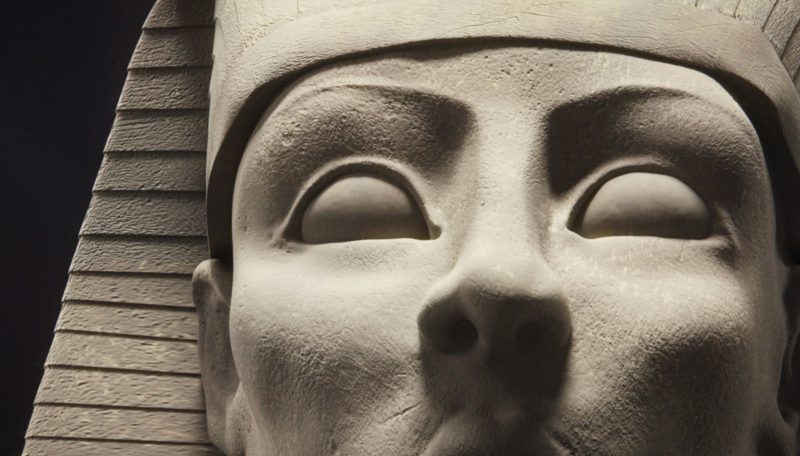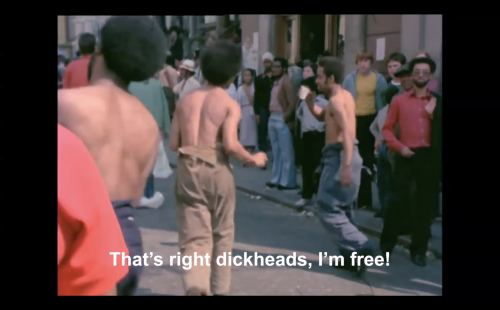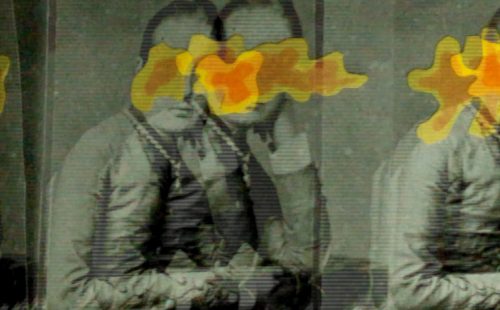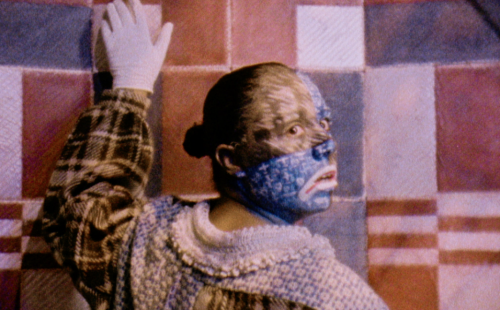
VIDEOCLUB AT ART KAOHSIUNG
videoclub has been invited to participate in Art Kaohsiung, an art fair that takes place in Taiwan’s second largest city. We will be showing four films by artists Patrick Hough and Karen Kramer inside two shipping containers at the art fair. The programme is showing as part of Art Kaohsiung’s public programme, and will be freely accessible to visitors to the art fair between 8 and 10 December 2017.
Venue: The PIER-2 ART CENTER, Dayong Warehouse, No. 1 Dayong Rd, Yancheng District, Kaohsiung City, 803, Taiwan.
Dates: 8-10 December 2017
Friday, 8 December 2017, 11am – 7pm
Saturday, 9 December 2017, 11am – 7pm
Sunday, 10 December 2017, 11am – 6pm
For ticket details and purchase, visit the Art Kaohsiung website.
ARTWORKS
And if in a Thousand Years, Patrick Hough, 2017, 22:14 mins
When the film-set for Cecil B DeMille’s The Ten Commandments had had its day, it was, like the biblical civilisation it evoked, lost to the sands of time – in its case, deliberately buried, in an act of money-saving expediency, under the dunes of the Southern California desert where the movie was shot. Over the years, though, those shifting sands have gradually exposed this piece of epic landfill, bringing souvenir hunters to gather where archaeologists (or Egyptologists) used to tread.
In Patrick Hough’s video, shot on location at the site, it is not just fake fragments of the past that are disinterred. What hovers over the place is a spirit of uncertainty; one that questions bedrock values like ‘originality’ and ‘authenticity’ and dusts them with other layers of meaning: the extraordinary ease of reproducibility, the spray-on glamour of cinematic semi-celebrity. This spirit of uncertainty is encapsulated by the figure of a sphinx – once part of the décor of the majestic film-set, now wandering in ghostly limbo; haunting the nearby town like a wildcat on the prowl. The sphinx’s hybrid form and cryptic, enigmatic presence is also a symbol of a blurring between the material and the virtual that Hough’s video not only proposes but visibly enacts, using sophisticated digital scanning techniques to suggest the outline of a new technological horizon that is, even as we look back nostalgically at the remnants of earlier eras, writing its own name upon the sand.
And If In A Thousand Years was commissioned for the Jerwood/FVU Awards: Neither One Thing or Another, a collaboration between Jerwood Charitable Foundation and FVU. FVU is supported by Arts Council England.
The Hills Have Eyes, Patrick Hough, 2011, 11:03 mins
The Hills Have Eyes explores the fabricated space of the film set whereby the iconic architecture of the American south west has been displaced from its original context and imposed on the Moroccan landscape near the town of Ouarzazate. Footage of a film set is shown here juxtaposed with the stage directions of the original film script as inter-titles. In the artificial construct of the set, the script writer’s original vision is unintentionally repeated each day in an unending loop, though the film crew are long gone. An old man lives in the set, and still sits on the porch of the old gas station, plastic rifle in hand, in a strange echo of the script writers directions. The act of creating fiction has inadvertently created a new reality. This piece attempts to reveal the disrupting power of fiction in the Moroccan landscape, bearing witness to the way in which reality mirrors the fiction of the film.
The eye that articulates belongs on land, Karen Kramer, 2016, 23mins
The eye that articulates belongs on land is a single channel film installation with stereo sound. It was jointly commissioned by Jerwood Charitable Trust and Film Video Umbrella and premiered at Jerwood space, London in March 2016. It was partly shot on location in Japan, specifically in areas affected by the Tōhoku earthquake, tsunami and the subsequent meltdown of the reactors in the Fukushima Daiichi nuclear power plant. The conceptual dichotomy between ‘man-made’ and ‘natural’ disaster had been the focus of my practice for some time when I made this film, which takes its title from an essay by landscape architects Dilip Da Cunha and Anuradha Mathur on the topic of New Orleans after Hurricane Katrina. It allowed me to respond artistically to my research on human habitation on land in violent collision with the instability of bodies of water.
The narrative of the film has a folkloric and fantastical quality – the quality of a fable, weird tale or myth. It is narrated in monologue by a mummified Hokkaido fox named Sasaki, voiced by the actor Togo Igawa. Sasaki represents an emissary between alternate worlds, both spatial and temporal, and spends much of the film reflecting mournfully upon cataclysmic consequences of absolute division between land and sea. A substantial part of Sasaki’s monologue is lifted from eyewitness accounts of survivors of both the Tōhoku earthquake/tsunami and of the atomic bombings of Hiroshima and Nagasaki. The monologue is uninterrupted until Sasaki’s descent into a black void where he is taunted by entities called the forecasters – represented as animated, highly stylised of water molecules – and by Urania, muse of astronomy – the namesake of Uranium.
LIMULUS, Karen Kramer, 2013, 11:45 mins
LIMULUS is a film and speculative fiction about the encounter between a piece of ocean debris (a discarded mylar balloon), a horseshoe crab and a 1974 Seeburg ‘Olympian’ jukebox. It addresses two kinds of obsolescence – one, a redundant music machine, the other the once indispensable horseshoe crab whose extinction by over-fishing has been stayed so it’s blood can be harvested for a clotting agent with widespread pharmaceutical use. With synthetic alternatives available the horseshoe crab’s protection is at risk, but the contrasting timescales of the two – one machine-made history in decades, the other under threat after 450 million years on this earth – gives pause for thought; both about our relationship with the non-human and of our own finitude as a species.Further to addressing the act of storytelling and formal categories like the allegory or the fable, Limulus, reflects pressing ecological realities and the way that conceptions of the ‘natural world,’ elemental force and deep time are affected by them.
Focusing on oceanic life and the demands on it of human industries, it highlights the interface between scientific fact and mythic fiction in human understanding of the world. This is especially prescient where the sea is concerned as it’s perils (uninhabitable, unpredictable, frighteningly vast it is an eternal menace) and importance as a fundamental condition of all life and much surplus activity on dry land make it one of the ageless subjects of imaginary narrative.A note on sound: The narrator’s voice was made possible by the Cornell Lab of Ornithology who provided vocalisation of 15 different marine animals, which were spliced together to make an ethereal, multi-tonal and multi-species voice.
For enquiries about the artworks, please contact Jamie Wyld, Director of videoclub: jamie@videoclub.org.uk / +44(0)7813 118570.







